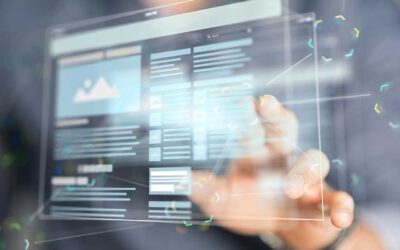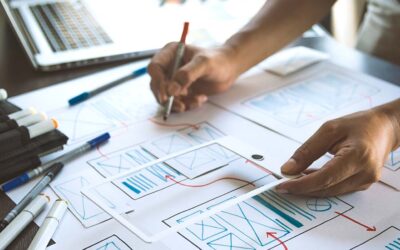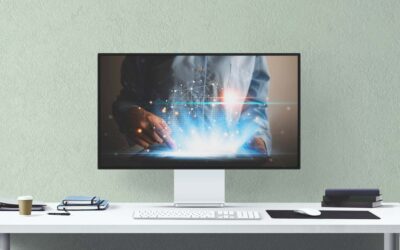The 4 Most Important Museum Digital Project Components

Rachael Cristine Woody
This is the last post in the current miniseries. So far, we’ve covered The Difference Between Museum Digital Programs and Projects and How COVID Has Changed Museum Digital Projects Forever. In this post I’ll lay out the primary components that must be considered at the beginning of every digital project: objective, stakeholders, resources, and deliverables.
No matter what type of project you’re working on these four components should always be addressed first as they’ll inform the rest of your project framework.
Defining the Components for a Successful Digital Project
- Objective: The ultimate goal for the project. This is the desired outcome(s) as informed by the impact of the project’s defined deliverables.
- Stakeholders: The people who can (and should) contribute to the project.
- Resources: The tools (software and hardware), setting, and people required to successfully complete the project.
- Deliverables: The quantifiable products that will result from the project.
Composing the Components of a Digital Project
Objective: This can serve as your project mission statement—the reason why you’re undertaking the digital project. To form an effective “Objective” think about the desired outcome(s) as informed by the impact of the project’s defined deliverables. Of the four components you may find it helpful to create this one last.
Stakeholders: Stakeholders are people (individuals who may be serving as an organization/community representative) who have a “stake” in the digital project. They may be the people being served by the project or can benefit from the project; and/or they may be the people who can assist or consult on the project because of their skills, knowledge, and experience. As a result, these people can be both internal and external to the museum and if they are members of a community who have been under-invited to previous museum activities than it is critically important that you engage with them early and equitably. Please see my previous post Responsible Practices for Working with Communities and Collections for more on this subject.
Resources: If you’re new to digital projects this component can be difficult to think of, at first. If so, please see my previous post What to Do When It’s Your First Museum Digitization Project for support. Given that this is a digital project you’re going to need hardware and software appropriate to the collection items you’re working with. You will also likely need focused staff time, contractors, or vendors for the project—depending upon your circumstances. Other resources like space, digital tools knowledge (training), and funding (to acquire tools, training, and assistance) may also be needed. It’s important to think of them all now so that you can verify you have all the resources you need for a successful project.
Deliverables: What’s the end result? With digital projects it’s usually quantifiable products; such as: number of items digitized, number of exhibits created, number of digital visitors, etc. It’s sometimes easier to think of these items first and then work your way backwards through Resources, Stakeholders, and Objective.
Conclusion
This is just the beginning of what it takes to construct a successful digital project. Stay tuned as I continue to cover this important facet of our work with more information, resources, and recommendations to help make your job easier.
Additional Reading
The Critical Difference Between Museum Deliverables and Outcomes
Responsible Practices for Working with Communities and Collections
Museum Digital Project Specifications
Who are the Stakeholders in Museum Digital Projects?
What to Do When It’s Your First Museum Digitization Project
LAMs are More Alike Than Different: Physical vs Digital Nature of the Work
Margot Note’s free e-book, “Demystifying Archival Projects: 5 Essentials for Success,” courtesy of Lucidea Press

Rachael Cristine Woody
Expert Rachael Cristine Woody advises on museum strategies, collections management, and grant writing for a wide variety of clients. In addition to several titles published by Lucidea Press, Ms. Woody is a regular contributor to the Think Clearly blog. Register here for her upcoming webinar, “Museum Digital Project Fundamentals” on July 28, 2021. And learn about Lucidea’s Argus solution for powerful and innovative museum collections management.
Similar Posts
Exploring No-Code Digital Storytelling: Hoover’s “Fanning the Flames” Exhibit
Explore no-code digital storytelling with Hoover’s ‘Fanning the Flames’ exhibit. See how interactive tools (Deep Zoom Color Compare & Hot Spot) enhance user engagement and the visual experience.
An Introduction to Scrollytelling for Museums
Discover how museums use scrollytelling and digital storytelling platforms to create immersive narratives. This introduction explores key concepts and approaches to interactive storytelling.
Exploring Self-Determinate Multiple Pathways: An Example of Digital Storytelling
Discover how self-determinate multiple pathways offer flexible interactive storytelling in museum exhibits. Learn from the Tenement Museum’s ‘Your Story Our Story.’
Digital Museum Storytelling Example: A Look at Self-Determinate Linear Pathways
Self-determinate characteristics on a linear pathway go beyond brief sidebar topics and instead offer alternative ways to navigate the linear pathway.






Leave a Comment
Comments are reviewed and must adhere to our comments policy.
0 Comments